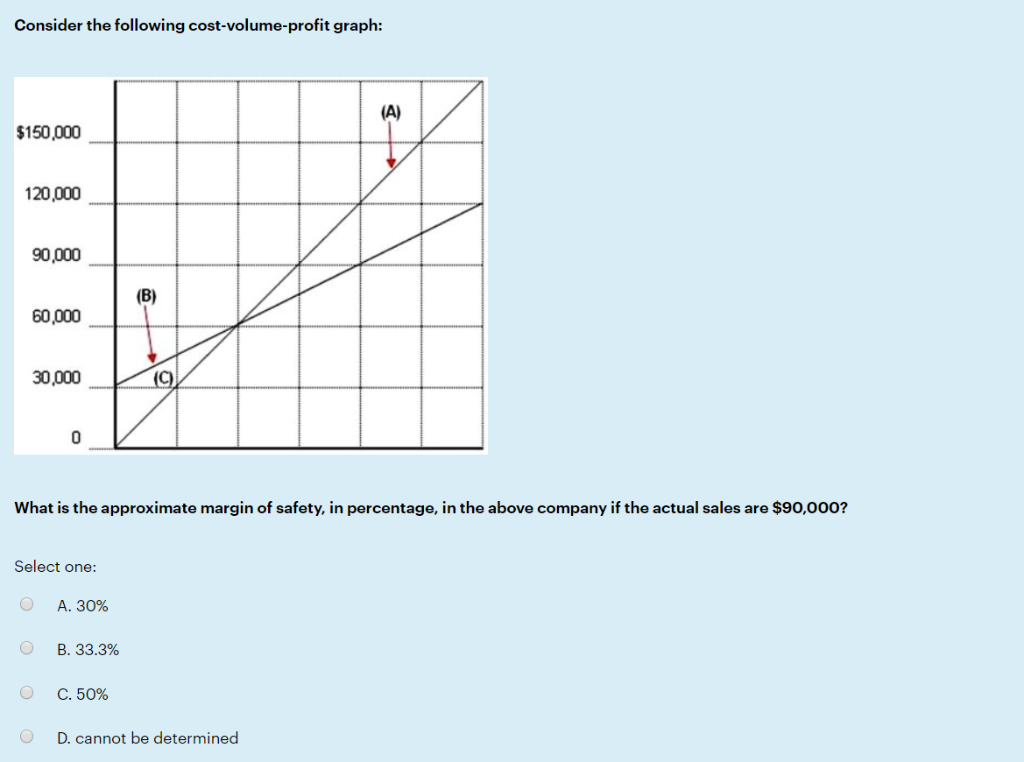




Which of the following departments may never be responsible for the direct materials price variance? Select one: A. The marketing department B. The purchasing department. C. The human resource department. D. The production department. If per unit variable cost decreases while total fixed costs and per unit sales price are unchanged, what happens to the break-even point? Select one: O A. The break-even point increases, and therefore more units must be sold to break-even. B. The break-even point decreases and therefore more units must be sold to break-even. C. The break-even point decreases, and therefore fewer units must be sold to break-even. O OD. The break-even point remains the same. Consider the following cost-volume-profit graph: $150,000 20,000 90,000 60,000 30,000 What is the approximate margin of safety, in percentage, in the above company if the actual sales are $90,000? Select one: 0 A, 30% O B. 33.3% 0 C, 50% D. cannot be determined A budget based on several different levels of activity, often including both a best-case and worst-case scenario, is called a: Select one A. Flexible budget. O B. Merchandise purchases budget. C. Production budget. D. Rolling budget Which of the following departments may never be responsible for the direct materials price variance? Select one: A. The marketing department B. The purchasing department. C. The human resource department. D. The production department. If per unit variable cost decreases while total fixed costs and per unit sales price are unchanged, what happens to the break-even point? Select one: O A. The break-even point increases, and therefore more units must be sold to break-even. B. The break-even point decreases and therefore more units must be sold to break-even. C. The break-even point decreases, and therefore fewer units must be sold to break-even. O OD. The break-even point remains the same. Consider the following cost-volume-profit graph: $150,000 20,000 90,000 60,000 30,000 What is the approximate margin of safety, in percentage, in the above company if the actual sales are $90,000? Select one: 0 A, 30% O B. 33.3% 0 C, 50% D. cannot be determined A budget based on several different levels of activity, often including both a best-case and worst-case scenario, is called a: Select one A. Flexible budget. O B. Merchandise purchases budget. C. Production budget. D. Rolling budget











